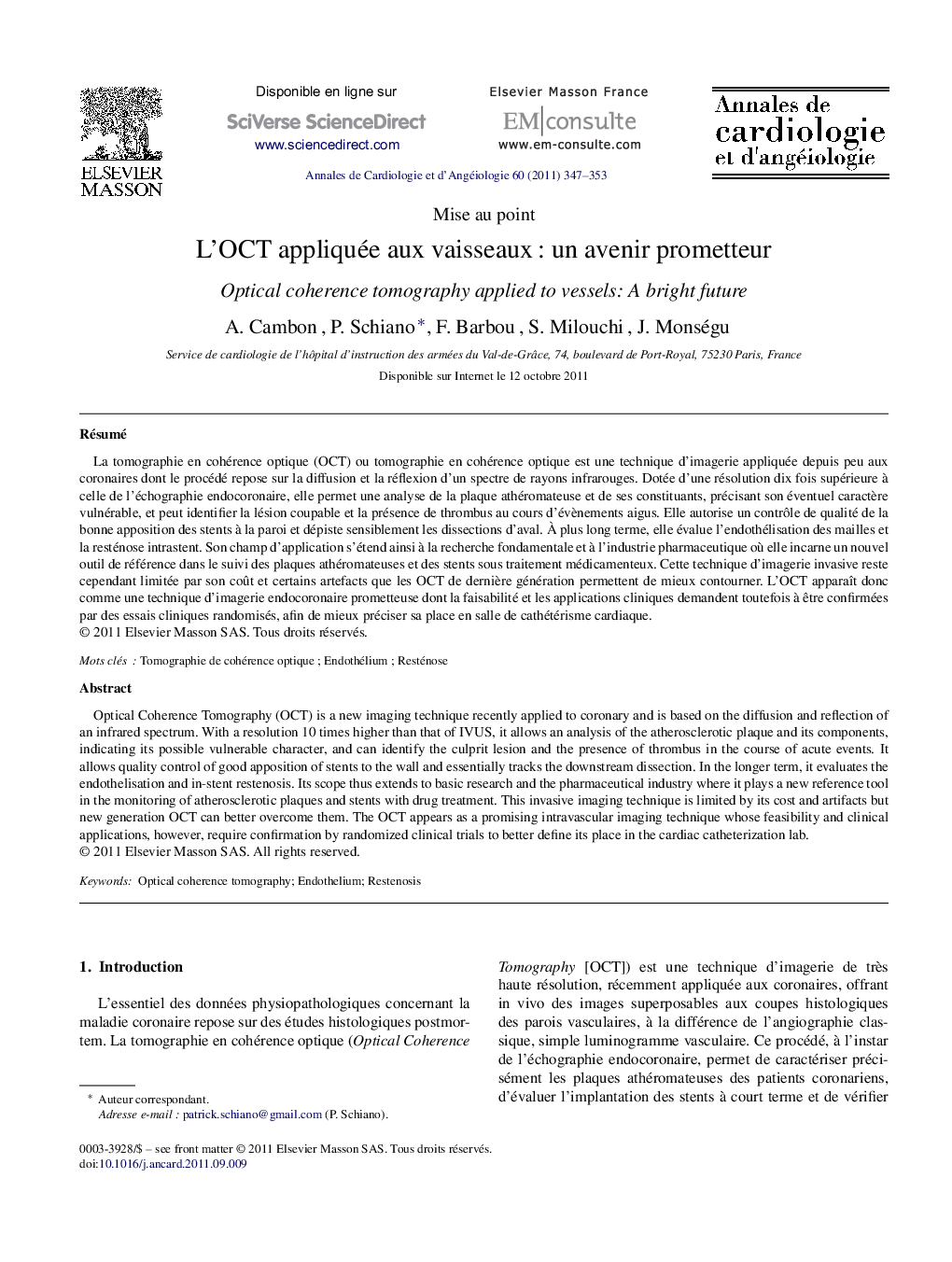| Article ID | Journal | Published Year | Pages | File Type |
|---|---|---|---|---|
| 2869127 | Annales de Cardiologie et d'Angéiologie | 2011 | 7 Pages |
RésuméLa tomographie en cohérence optique (OCT) ou tomographie en cohérence optique est une technique d’imagerie appliquée depuis peu aux coronaires dont le procédé repose sur la diffusion et la réflexion d’un spectre de rayons infrarouges. Dotée d’une résolution dix fois supérieure à celle de l’échographie endocoronaire, elle permet une analyse de la plaque athéromateuse et de ses constituants, précisant son éventuel caractère vulnérable, et peut identifier la lésion coupable et la présence de thrombus au cours d’évènements aigus. Elle autorise un contrôle de qualité de la bonne apposition des stents à la paroi et dépiste sensiblement les dissections d’aval. À plus long terme, elle évalue l’endothélisation des mailles et la resténose intrastent. Son champ d’application s’étend ainsi à la recherche fondamentale et à l’industrie pharmaceutique où elle incarne un nouvel outil de référence dans le suivi des plaques athéromateuses et des stents sous traitement médicamenteux. Cette technique d’imagerie invasive reste cependant limitée par son coût et certains artefacts que les OCT de dernière génération permettent de mieux contourner. L’OCT apparaît donc comme une technique d’imagerie endocoronaire prometteuse dont la faisabilité et les applications cliniques demandent toutefois à être confirmées par des essais cliniques randomisés, afin de mieux préciser sa place en salle de cathétérisme cardiaque.
Optical Coherence Tomography (OCT) is a new imaging technique recently applied to coronary and is based on the diffusion and reflection of an infrared spectrum. With a resolution 10 times higher than that of IVUS, it allows an analysis of the atherosclerotic plaque and its components, indicating its possible vulnerable character, and can identify the culprit lesion and the presence of thrombus in the course of acute events. It allows quality control of good apposition of stents to the wall and essentially tracks the downstream dissection. In the longer term, it evaluates the endothelisation and in-stent restenosis. Its scope thus extends to basic research and the pharmaceutical industry where it plays a new reference tool in the monitoring of atherosclerotic plaques and stents with drug treatment. This invasive imaging technique is limited by its cost and artifacts but new generation OCT can better overcome them. The OCT appears as a promising intravascular imaging technique whose feasibility and clinical applications, however, require confirmation by randomized clinical trials to better define its place in the cardiac catheterization lab.
